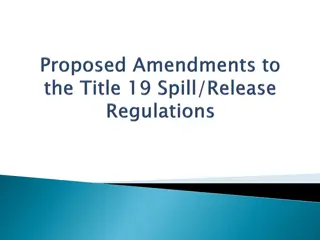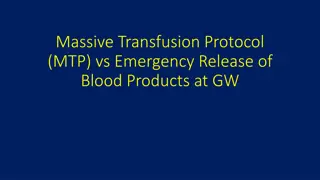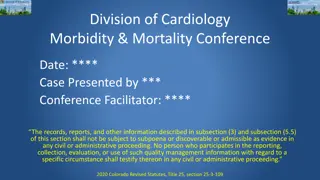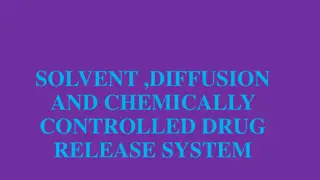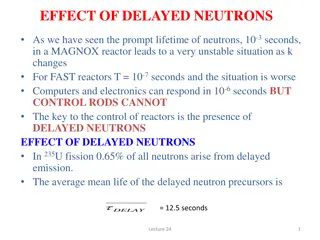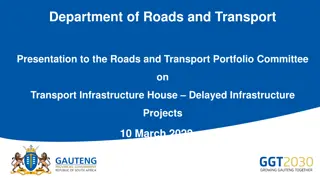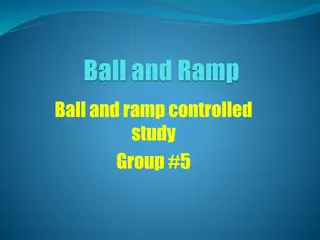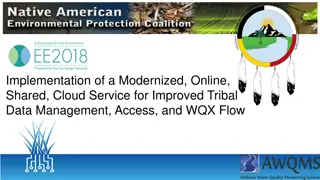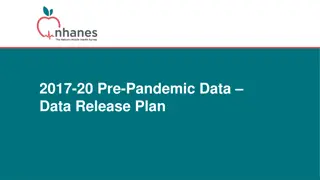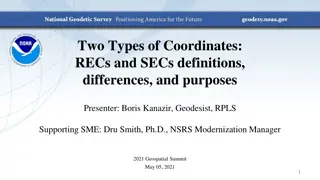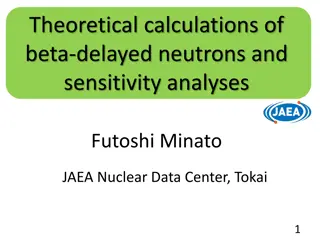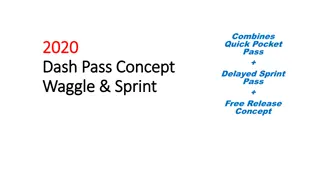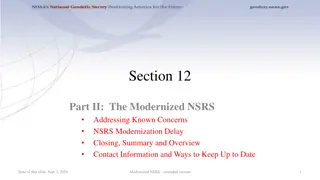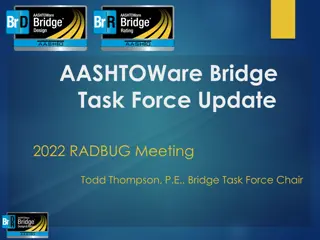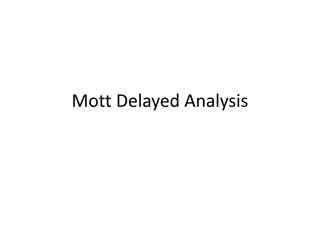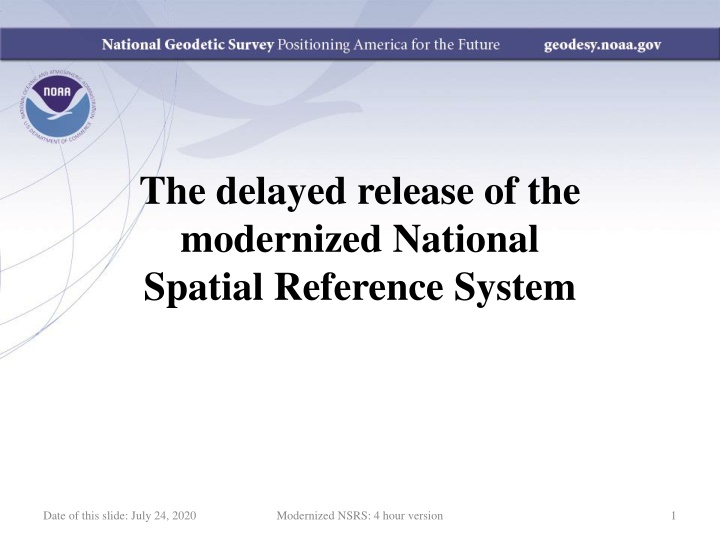
Modernized National Spatial Reference System Overview
Explore the modernized National Spatial Reference System (NSRS) and its components such as datums, coordinates, software, and policies. Learn about the timeline, delay drivers, and phased rollouts of this significant update to the geospatial reference system. Discover the changes, updates, and enhancements in the new version of NSRS.
Download Presentation

Please find below an Image/Link to download the presentation.
The content on the website is provided AS IS for your information and personal use only. It may not be sold, licensed, or shared on other websites without obtaining consent from the author. If you encounter any issues during the download, it is possible that the publisher has removed the file from their server.
You are allowed to download the files provided on this website for personal or commercial use, subject to the condition that they are used lawfully. All files are the property of their respective owners.
The content on the website is provided AS IS for your information and personal use only. It may not be sold, licensed, or shared on other websites without obtaining consent from the author.
E N D
Presentation Transcript
The delayed release of the modernized National Spatial Reference System Date of this slide: July 24, 2020 Modernized NSRS: 4 hour version 1
Outline - Defining the modernized NSRS - This is a lengthy part of the talk. The intent is to emphasize how big the modernized NSRS is, and outline just what you get as a user of the modernized NSRS - - - - - - The original timeline Progress from 2007 through 2020 Drivers of delay Rebooting the timeline Phased rollouts or not Conclusion Date of this slide: July 24, 2020 Modernized NSRS: 4 hour version 2
- Defining the modernized NSRS - The original timeline - Progress from 2007 through 2020 - Drivers of delay - Rebooting the timeline - Phased rollouts or not - Conclusion Date of this slide: July 24, 2020 Modernized NSRS: 4 hour version 3
What is the modernizedNSRS? It is a replacement for the entire current National Spatial Reference System (NSRS) - Datums - Coordinates - Orbits - Database - Software - Policies, procedures and philosophies - And .skills! New hires, new training! Let s list the details in semi-chronological order Date of this slide: July 24, 2020 Modernized NSRS: 4 hour version 4
Definitional Components Date of this slide: July 24, 2020 Modernized NSRS: 4 hour version 5
Components ITRF2020 released and adopted at NGS NOAA CORS Network (NCN) and IGS compute and update their CORS coordinate functions NGS finalizes new multi-GNSS software NGS and IGS compute and update their GNSS orbits All loaded into the NSRS database and available through the data delivery system Date of this slide: July 24, 2020 Modernized NSRS: 4 hour version 6
Components NCN fully modernized NGS implementing non-linear CORS coordinate functions where necessary NGS has in place a functioning method to keep CORS coordinate functions accurate on a day-to-day basis ARP/GRP discrepancies fully addressed CORS grading system in place NOAA Foundation CORS Network (NFCN) built NGS has the ability to expand the NCN station count by an order of magnitude NGS is running an RTN alignment service (RAS) All loaded into the NSRS database and available through the data delivery system Date of this slide: July 24, 2020 Modernized NSRS: 4 hour version 7
Components Four terrestrial reference frames* defined NGS has computed the Euler pole parameters (EPPs) for each plate (EPP2022) CORS coordinate functions available in all four frames All loaded into the NSRS database and available through the data delivery system *NATRF2022, PATRF2022, CATRF2022, MATRF2022 Date of this slide: July 24, 2020 Modernized NSRS: 4 hour version 8
Components Geopotential datum* defined GRAV-D airborne mission complete/processed US/Canada/Mexico geoid theory issues resolved GM2022,GEOID2022, DEFLEC2022, GRAV2022, DEM2022 available GRAV2022 tool built Dynamic Height calculator built All loaded into the NSRS database and available through the data delivery system *NAPGD2022 Date of this slide: July 24, 2020 Modernized NSRS: 4 hour version 9
And at this pointliterally There are NO coordinates on passive control There is no software to process your surveys There are no transformation tools To wit: There s no way to even use this modernized NSRS yet Let s keep going. There s a lotleft to do Things get a little less chronological at this point Date of this slide: July 24, 2020 Modernized NSRS: 4 hour version 10
Tools and Passive Control Components and their Capabilities Date of this slide: July 24, 2020 Modernized NSRS: 4 hour version 11
Components Intra-frame velocity model* defined 2-4 new geophysics/geodynamics hires Comprehensive statistical evaluation of all historic and future earthquake models to achieve formal accuracy estimates for all Plan for keeping the model updated daily Long term plan to support INSAR data collection All loaded into the NSRS database and available through the data delivery system *IFVM2022 Date of this slide: July 24, 2020 Modernized NSRS: 4 hour version 12
IFVM2022 Capability Provides an estimate of 3-D mark movement through time Likely proxied by surface movement models Height movements expected to be poorly determined Allows a user to approximate coordinates at a different epoch from when the observations were collected NGS will use this to create SECs and RECs Survey Epoch Coordinates (AKA time dependent coordinates) Reference Epoch Coordinates (AKA coordinates every 5 years ) Users can apply this within OPUS to select their epoch(s) of choice Date of this slide: July 24, 2020 Modernized NSRS: 4 hour version 13
Components New Least Squares Adjustment software Contract work and/or new hires Replaces ADJUST, ASTA, NETSTAT, CALIBRATE, GPSCOM Modern language / integrated with database Fixes numerous approximations and inaccurate shortcuts in current software Rigorous equation derivation and documentation Date of this slide: July 24, 2020 Modernized NSRS: 4 hour version 14
New LSA code Capability Observation reductions Estimation across epochs Rigorous add/removal of observations Support for observation equations, condition equations, fixed and stochastic constraints, hypothesis testing, Helmert blocking Engine behind all LSA in OPUS as well as REC and SEC computations Date of this slide: July 24, 2020 Modernized NSRS: 4 hour version 15
Components State Plane Coordinates* defined Projection parameters for 50 states, DC, plus 5 insular areas (PR, USVI, AS, CNMI, Guam) Also special use zones as they are approved Each with 1-3 possible layers All loaded into the NSRS database and available through the data delivery system *SPCS2022 Date of this slide: July 24, 2020 Modernized NSRS: 4 hour version 16
SPCS2022 Capability Allows a user to convert h in (N/P/M/C)ATRF2022 into SPCS At same epoch as h Date of this slide: July 24, 2020 Modernized NSRS: 4 hour version 17
Components OPUS-S and OPUS-RS replaced with OPUS New GUI built with greater flexibility OPUS recommendations must be developed and coded into an autonomous prompt for the user to adopt or not NSRS database coordinates Weights Choice of CORSs (using CORS grading system) Answers viewable as part of the data delivery system Ability for users to submit their data file(s) to NGS Date of this slide: July 24, 2020 Modernized NSRS: 4 hour version 18
OPUS Capability (1) One GNSS file yields at any reasonable epoch(s): ITRF2020 XYZ, h (N/P/C/M)ATRF2022: XYZ, h, SPCS2022, UTM, USNG NAPGD2022: H, N, , , Hdyn, g And uncertainty estimates of all of the above Users who rely upon OPUS recommendations will get a solution saying tied to the NSRS Date of this slide: July 24, 2020 Modernized NSRS: 4 hour version 19
Components 2020 Reference Epoch Coordinates (RECs) estimated All* geometric (GNSS/RTN/RTK/Classical) data organized All* orthometric (leveling) data organized All gravimetric (absolute/relative) data organized REC project workplace built (database pull, visualization, cleaning, adjustment, checking, loading) All three projects executed, including answering all scientific questions (including data age) All loaded into the NSRS database and available through the data delivery system *At least 1994+ Date of this slide: July 24, 2020 Modernized NSRS: 4 hour version 20
REC Capability The NSRS database, through the data delivery system will allow users to see, for any PID, these adjusted NSRS coordinates, circa 2020.00: ITRF2020 XYZ, h (N/P/C/M)ATRF2022: XYZ, h, SPCS2022, UTM, USNG NAPGD2022: H, g Plus many differential coordinates between PIDs Plus uncertainty estimates of all These are all considered part of the NSRS Date of this slide: July 24, 2020 Modernized NSRS: 4 hour version 21
Components NADCON expanded NGS IDB pull of last NAD 83(2011/PA11/MA11) epoch 2010.00 latitudes, longitudes and ellipsoid heights NSRS DB pull of (N/P/C/M)ATRF2022 2020.00 latitude, longitude and ellipsoid height RECs Outlier cleaning Grid size experiments Build grids and error grids Publish report All loaded into the NSRS database and available through the data delivery system Date of this slide: July 24, 2020 Modernized NSRS: 4 hour version 22
NADCON Capability Transform , , h from/to: Region From To CONUS NAD 83(2011) epoch 2010.00 NATRF2022 epoch 2020.00 Alaska NAD 83(2011) epoch 2010.00 NATRF2022 epoch 2020.00 Hawaii NAD 83(PA11) epoch 2010.00 PATRF2022 epoch 2020.00 PR / USVI NAD 83(2011) epoch 2010.00 CATRF2022 epoch 2020.00 Amer. Samoa NAD 83(PA11) epoch 2010.00 PATRF2022 epoch 2020.00 Guam / CNMI NAD 83(MA11) epoch 2010.00 MATRF2022 epoch 2020.00 To is default, but other frames available through EPP2022 Date of this slide: July 24, 2020 Modernized NSRS: 4 hour version 23
Components VERTCON expanded NGS IDB pull of last NAVD 88, PRVD 02, ASVD 02, NMVD 03, GUVD 04, VIVD 09 and LT normal orthometric and orthometric heights NSRS DB pull of NAPGD2022 2020.00 orthometric height RECs Outlier cleaning Grid size experiments Build grids and error grids Publish report All loaded into the NSRS database and available through the data delivery system Date of this slide: July 24, 2020 Modernized NSRS: 4 hour version 24
VERTCON Capability Transform H from/to: Region From (no epochs) To CONUS NAVD 88 NAPGD2022 epoch 2020.00 Alaska NAVD 88 NAPGD2022 epoch 2020.00 Hawaii Local Tidal NAPGD2022 epoch 2020.00 PR PRVD 02 NAPGD2022 epoch 2020.00 USVI VIVD 09 NAPGD2022 epoch 2020.00 Amer. Samoa ASVD 02* NAPGD2022 epoch 2020.00 Guam GUVD 04 NAPGD2022 epoch 2020.00 CNMI NMVD 03 NAPGD2022 epoch 2020.00 *Currently deprecated Date of this slide: July 24, 2020 Modernized NSRS: 4 hour version 25
Components Survey Epoch Coordinates (SECs) estimated All* geometric (GNSS/RTN/RTK/Classical) data organized All* orthometric (leveling) data organized All gravimetric (absolute/relative) data organized SEC project workplace built (database pull, visualization, cleaning, adjustment, checking, loading) Dozens of projects executed, including answering all scientific questions (including size of adjustment windows) All loaded into the NSRS database and available through the data delivery system *At least 1994+ Date of this slide: July 24, 2020 Modernized NSRS: 4 hour version 26
SEC Capability The NSRS database, through the data delivery system will allow users to see, for any PID, these adjusted NSRS coordinates, at survey epoch (the time the data was collected): ITRF2020 XYZ, h (N/P/C/M)ATRF2022: XYZ, h, SPCS2022, UTM, USNG NAPGD2022: H, g Plus many differential coordinates between PIDs Plus uncertainty estimates of all These are all considered part of the NSRS Date of this slide: July 24, 2020 Modernized NSRS: 4 hour version 27
Components OPUS-Projects replaced with OPUS New GUI built with greater flexibility, fully supporting GNSS, leveling, classical and gravity surveys OPUS recommendations developed and coded into an autonomous prompt for the user to adopt or not NSRS database coordinates Weights Choice of CORSs (based on CORS grading system) Special support for CBLs, airport surveys and other special survey types particular to the mission of NGS and NSRS users Answers viewable as part of the data delivery system Ability for users to submit their data file(s) to NGS Date of this slide: July 24, 2020 Modernized NSRS: 4 hour version 28
OPUS Capability (2) Survey projects with one or more geodetic observation files yields at any reasonable epoch(s), some or all of the below as adjusted coordinates: ITRF2020 XYZ, h (N/P/C/M)ATRF2022: XYZ, h, SPCS2022, UTM, USNG NAPGD2022: H, g Differential values between some/all points Uncertainty estimates of all of the above Users who rely upon OPUS recommendations will get a solution saying tied to the NSRS Date of this slide: July 24, 2020 Modernized NSRS: 4 hour version 29
- Defining the modernized NSRS - The original timeline - Progress from 2007 through 2020 - Drivers of delay - Rebooting the timeline - Phased rollouts or not - Conclusion Date of this slide: July 24, 2020 Modernized NSRS: 4 hour version 30
Original Timeline In 2007, NGS assumed we would be done by 2018 Optimistic GRAV-D planning Incomplete picture of the entire modernized NSRS By 2013, a finish of 2022 seemed correct Still, the big picture wasn t clear Optimism and enthusiasm within NGS was high for many years By 2020 three issues derailed that date: Final clarity on the complexity of the task Loss of personnel without backfill 2020 Date of this slide: July 24, 2020 Modernized NSRS: 4 hour version 31
- Defining the modernized NSRS - The original timeline - Progress from 2007 through 2020 - Drivers of delay - Rebooting the timeline - Phased rollouts or not - Conclusion Date of this slide: July 24, 2020 Modernized NSRS: 4 hour version 32
Progress 2007 through 2020 Clarity: Three Blueprint documents fully outlined the modernized NSRS GRAV-D coverage grew from 0% to 81.6% xGEOID models, built on GRAV-D, every year from 2014-2020 xGEOID20 will be first Canada/Mexico/USA joint model, but not the last! Software to build NADCON and VERTCON grids was entirely rebuilt And was used to create NADCON 5.0 release 20160901 and VERTCON 3.0 release 20190601 Date of this slide: July 24, 2020 Modernized NSRS: 4 hour version 33
Progress 2007 through 2020 18 of 36 NOAA Foundation CORS Network stations operational SPCS2022 is nearly complete Multi-GNSS PAGES replacement: 2015-2022 Switch from ITRF2008 to ITRF2014 Numerous time saving steps implemented, so the switch to ITRF2020 will go even faster Date of this slide: July 24, 2020 Modernized NSRS: 4 hour version 34
Progress 2007 through 2020 A scoping study on how best to build IFVM2022 was funded and completed in partnership with Scripps I.O. A least squares adjustment contract was funded and work begun in 2020 OPUS-Projects was modified to allow Bluebooking Laying down the foundation of work in OPUS, submit data to NGS Date of this slide: July 24, 2020 Modernized NSRS: 4 hour version 35
Progress 2007 through 2020 OPUS-Projects support for RTK/RTN vectors from 2017-2020 (expected release) This is the first step toward a fully integrated GNSS+RTN+RTK/Classical/Leveling/Gravity OPUS Scoping study on organizing raw GNSS data Since the current NSRS relies upon processed vectors, and not raw GNSS, the raw GNSS data is poorly organized 40 person-years to get all half million or so raw GPS files properly associated with a PID, an antenna type and an antenna height NGS will rely upon processed vectors for the first REC and SEC adjustments Date of this slide: July 24, 2020 Modernized NSRS: 4 hour version 36
- Defining the modernized NSRS - The original timeline - Progress from 2007 through 2020 - Drivers of delay - Rebooting the timeline - Phased rollouts or not - Conclusion Date of this slide: July 24, 2020 Modernized NSRS: 4 hour version 37
Drivers of delay Government shutdowns Three shutdowns in 2018 alone Grounded GRAV-D on the brink of its Pacific survey Pacific: Expensive, difficult to plan Effectively put GRAV-D s Pacific schedule behind by 1 year Date of this slide: July 24, 2020 Modernized NSRS: 4 hour version 38
Drivers of delay Growing complexity As new components were thought of, they often led to additional projects and unforeseen work Example: We need to have time-dependent coordinates But the IDB doesn t support this We need a new database! But we also need to define things like adjustment windows and redundancy and simultaneous And we need new least squares adjustment software which supports this But we have to treat leveling differently from GPS And speaking of which, why are we still a GPS-only shop? We need multi-GNSS software! But that ll take years! Better get started! Date of this slide: July 24, 2020 Modernized NSRS: 4 hour version 39
Drivers of delay Personnel It seems that every time I look under the hood at NGS, I see a Maserati engine in an office with a budget of a VW bug. Admiral Timothy Gallaudet, Deputy NOAA Administrator NGS has both lost and gained significant talent over the last 13 years But overall has run a slight deficit in gain/loss The CORS team is a fraction of its former size However, we ve been lucky that new hires have been phenomenal Date of this slide: July 24, 2020 Modernized NSRS: 4 hour version 40
Drivers of delay 2020 Grounding of GRAV-D flights Substantive impact on delay Moving to a 100% telework situation for months Only moderately impacted the delay Date of this slide: July 24, 2020 Modernized NSRS: 4 hour version 41
- Defining the modernized NSRS - The original timeline - Progress from 2007 through 2020 - Drivers of delay - Rebooting the timeline - Phased rollouts or not - Conclusion Date of this slide: July 24, 2020 Modernized NSRS: 4 hour version 42
Rebooting the timeline The long pole in the tent is GRAV-D Much of the GRAV-D remaining work is in the Pacific, which raises the question of phased rollouts Pacific is expensive, difficult to schedule Correct, On Budget, On Time: Pick two With the likelihood of a multi-year delay, we picked Correct and On Budget Do the work right Do it with the resources we have Date of this slide: July 24, 2020 Modernized NSRS: 4 hour version 43
Rebooting the timeline Other major high-resource/lengthy issues: Replace PAGES Fully modernize the NOAA CORS Network Complete rebuild of OPUS New least squares adjustment library built Define, design and build an RTN alignment service 10+ years of promises Date of this slide: July 24, 2020 Modernized NSRS: 4 hour version 44
Rebooting the timeline Chain dependencies If NGS wishes to roll out NADCON simultaneously with the modernized NSRS: NADCON needs reference epoch coordinates (RECs) RECs require LSA engine Contract and money Organized raw GNSS, vector GNSS and classical data GPS campaign for transformations has to be done An environment for visualizing and computing Time to build this environment A database for storing everything Time for experimenting on age-limiting data IFVM2022 completely built and available N/P/C/MATRF2022 fully defined Needs EPPs computed Requires a fully modernized NCN ITRF2020 fully adopted at NGS Requires new orbits in IGS20 New CORS coordinate functions Requires the GRP/ARP issue be resovled satisfactorily Date of this slide: July 24, 2020 Modernized NSRS: 4 hour version 45
- Defining the modernized NSRS - The original timeline - Progress from 2007 through 2020 - Drivers of delay - Rebooting the timeline - Phased rollouts or not - Conclusion Date of this slide: July 24, 2020 Modernized NSRS: 4 hour version 46
Phased Roll-outs NGS has a long history of phased rollouts Note that I didn t say glorious or successful Phased roll-outs mean a piecemeal service over the years I am opposed to this approach to the modernized NSRS if it is avoidable Date of this slide: July 24, 2020 Modernized NSRS: 4 hour version 47
Phased Rollouts - History NAD 83 released in 1986 NADCON released in 1990 Impact: Four years without any way to transform NAD 27 to NAD 83 NAVD 88 released in 1991 VERTCON released in 1994 Impact: Three years without any way to transform NGVD 29 to NAVD 88 Date of this slide: July 24, 2020 Modernized NSRS: 4 hour version 48
Phased Rollouts - History The HARN projects, 1990-1997 State-by-state GPS surveys and adjustments, feathered together over 8 years In order to roll-out one state at a time, rather than making everyone wait 8 years for a national adjustment ~ 40 separate realizations of NAD 83 in CONUS Impact: Confusion NAD 83(1992) exists in Alabama and Arizona (and others), but they aren t really the same thing NADCON (pre 5.0) provided four different values at the four corners monument due to four different HARNs at that point Date of this slide: July 24, 2020 Modernized NSRS: 4 hour version 49
Phase Rollouts - History After the HARN projects, we decided to repeat this approach with the FBNs (1996-2001) Impact: More confusion Some FBNs replaced a HARN, some did not NADCON supported HARN and FBN realizations inconsistently Date of this slide: July 24, 2020 Modernized NSRS: 4 hour version 50




